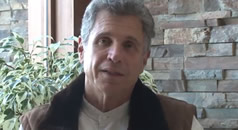Helping our Pets Die Consciously and Their
Families Release Them
 Quality Of Life check ups: If an animal is diagnosed with a terminal illness or has a deteriorating medical or ambulatory issue, quality of life evaluations must be done at appropriate intervals to ensure the “owner” or pet family is being realistic and compassionate in their decision making process. This is also a time to have them start a “letting go” dialogue between pet friends and family members so the animal does not hold onto a nearly lifeless body for the sake of those they love. Pets always want to please, therefore they must be confident in what their family is trying to convey.
Quality Of Life check ups: If an animal is diagnosed with a terminal illness or has a deteriorating medical or ambulatory issue, quality of life evaluations must be done at appropriate intervals to ensure the “owner” or pet family is being realistic and compassionate in their decision making process. This is also a time to have them start a “letting go” dialogue between pet friends and family members so the animal does not hold onto a nearly lifeless body for the sake of those they love. Pets always want to please, therefore they must be confident in what their family is trying to convey.
Have the family begin a conversation with their beloved pet as soon as possible, giving the pet permission to leave; if possible, two to three days in advance is helpful, but it can even be at the moment just preceding crossing over via euthanasia. The human family must physically and emotionally convey to the animal that they will be all right without them. I encourage them to spend time remembering moments of joy and laughter during their pet’s life while the process continues and the pet is given sedation. Life review helps people during this grief. If children are present, I have them participate and consider making a memory box (favorite toys, collar, pictures, etc.), and maybe put a little story in there too about their pet friend and what was so special about them.
To help the soul depart as the heart stops beating I hold the front feet, supporting the bottoms of the feet in the palms of my hands. Since most of their body weight is carried by these all of their life, it helps to usher their souls onward. At the same time I tell them it is okay to go, they don’t need their bodies anymore. The heart is sometimes the most resistant part when the human family has not come to terms with the death of the animal, this also happens with limb cancer. In these cases I place my hand over the heart and encourage the energy to release from this anchor and move on to the light.
Article by Amy L. Crockett DVM



 English
English  German
German 